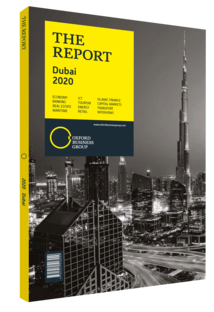Hamad Buamim, President and CEO, Dubai Chamber of Commerce and Industry: Interview

Interview: Hamad Buamim
How are recent reform measures expected to drive Dubai’s international competitiveness?
HAMAD BUAMIM: The continuation and expansion of Dubai’s stimulus plans in early 2019 were natural steps, considering the government’s increased focus on improving the ease of doing business and supporting the growth of small and medium-sized enterprises (SMEs), which represent more than 90% of companies in the emirate. The first quarter of 2019 saw the rollout of 10-year residency visas for investors and professionals; a five-year visa for entrepreneurs; and a “golden card” permanent residency system for expatriates who meet certain requirements. In addition, the government has made 122 economic activities across 13 sectors eligible for up to 100% foreign ownership, meaning that investors can now own projects in these fields. These are all strategic decisions that have boosted business confidence and strengthened Dubai’s reputation as a business hub.
Over this period Dubai also witnessed the impact from a round of business measures undertaken in 2018. A 35% year-on-year (y-o-y) increase was recorded in the number of business licences in Dubai during the first four months of 2019. In the first quarter of 2019 non-oil trade grew 7% y-o-y to $92.3bn, driven by a 30% jump in the value of exports. These are positive signs that the implemented initiatives have achieved their objectives of ensuring a stimulating business environment for multinational companies, SMEs and investors.
In recent years we have seen a drastic improvement in the UAE’s performance on global competitiveness indices. These important developments have largely been driven by economic and business reforms implemented in Dubai and other emirates. The UAE achieved its highest marks in key areas like government and business efficiency, legislation and setup, entrepreneurship, international experience, digital transformation, productivity and economic resilience.
There were several additional initiatives introduced that position Dubai to become one of the world’s most competitive economies and improve the emirate’s attractiveness as a location for foreign investment. For example, Dubai 10X is a holistic initiative that aims to place government entities 10 years ahead of the rest of the world across sectors. The initiative covers a wide range of projects, including the Dubai Chamber’s Digital Silk Road, which leverages blockchain technology to simplify global trade; an online marketplace to overhaul cargo trade; and a smart, end-to-end life cycle management system for automotive vehicles.
Which sectors are expected to see the most significant growth as a result of Expo 2020 Dubai?
BUAMIM: With Expo 2020 fast approaching, there are numerous sectors that are witnessing business activity and growth pickup as projects tied to the mega-event come to fruition. Hospitality, tourism, construction, infrastructure and logistics are among the key sectors that are seeing such an effect. Some estimates predict that Expo 2020 will contribute approximately $33.3bn to the UAE economy by 2031, creating thousands of jobs and investment opportunities in the process.
What kinds of investment opportunities will be created in Dubai by the Belt and Road Initiative (BRI)?
BUAMIM: As a key partner in the BRI and a preferred regional trading centre, Dubai is well positioned to reap the benefits of this project, which has the potential to change the dynamics of global trade. Strategically located between three continents and along the New Silk Road, Dubai is expected to play a major role in the route as a re-export hub, and the initiative is expected to create new investments, jobs and growth. China remains Dubai’s top trading partner, accounting for $37.8bn in bilateral, non-oil trade in 2018, while around 20% of the Middle East’s trade from China passes through the UAE. In addition, the project has opened the door to joint ventures and investments between UAE-based companies and their Chinese counterparts.
You have reached the limit of premium articles you can view for free.
Choose from the options below to purchase print or digital editions of our Reports. You can also purchase a website subscription giving you unlimited access to all of our Reports online for 12 months.
If you have already purchased this Report or have a website subscription, please login to continue.

